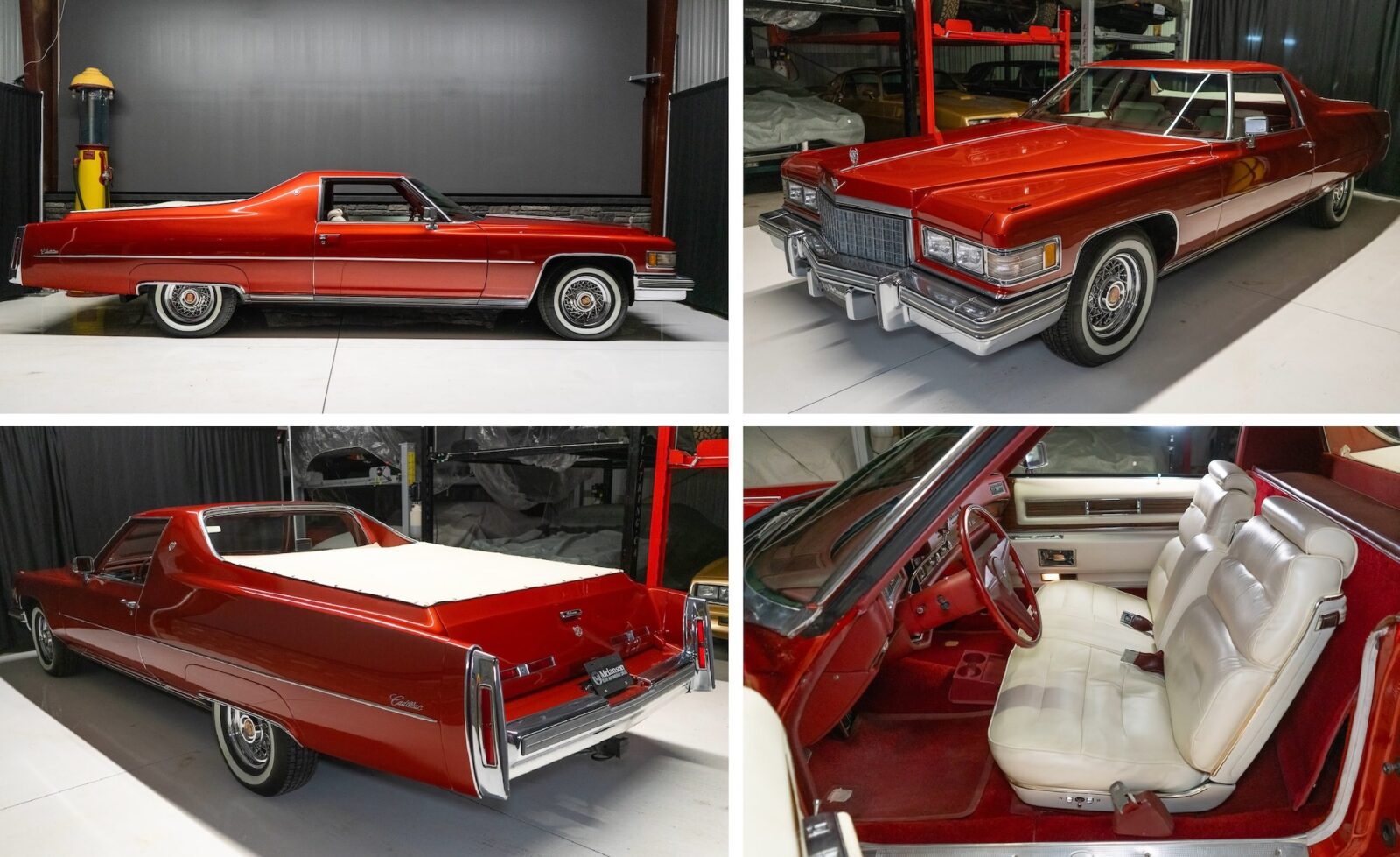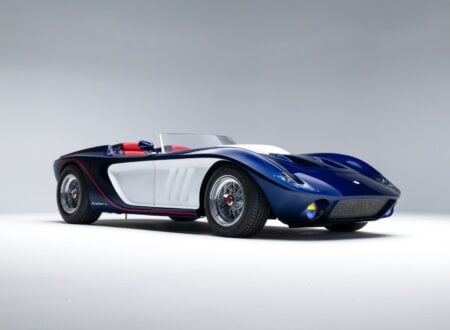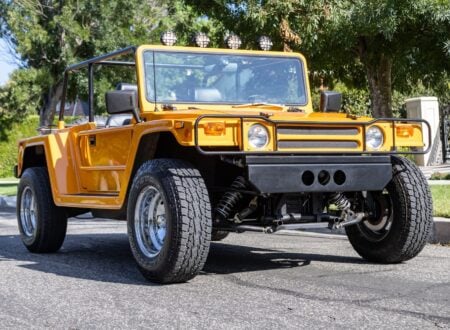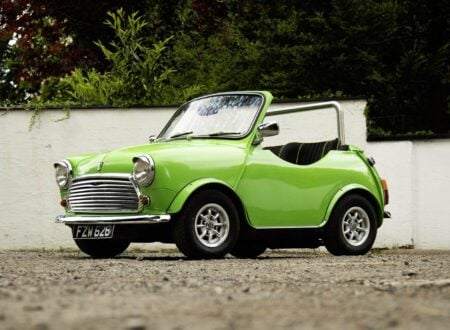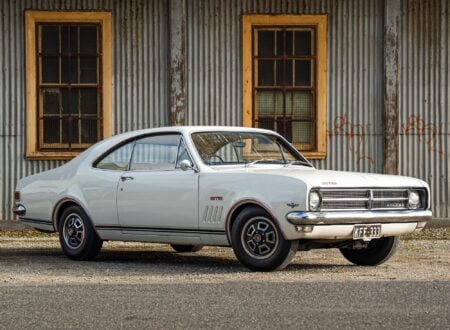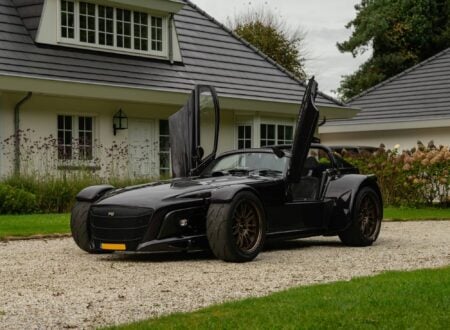This is the “Cadamino,” it’s a 1976 Cadillac Coupe DeVille that’s been given a professional conversion into a pickup, or a ute, as they call it in Australia.
This conversion was done by Dick Baker of Custom Coach Inc. in Lima, Ohio. They used a metal pickup bed and many other parts from a contemporary Chevrolet El Camino, and finished the car with such excellent attention to detail it looks like it could have been built by Cadillac themselves.
Fast Facts: The “Cadamino” Cadillac Pickup
- The Cadillac Coupe DeVille began as a trim level of the Series 62 in 1949 before becoming a full model line in 1959. Across eight generations to 2005, it defined Cadillac luxury beneath the Fleetwood. By the 1970s, the Coupe DeVille had become one of the largest American cars, thanks to consumer tastes for extreme size and conspicuous prestige.
- The fourth generation, launched in 1971, represented Cadillac’s peak big-car era, stretching over 19 feet long with a 130 inch wheelbase and a curb weight of more than 5,000 lbs. In 1976 it came with the 8.2 liter 500 cubic inch V8, then the largest passenger-car engine available, delivering massive torque despite tightening emissions controls.
- Styling updates in the mid-1970s included full B-pillars, rectangular headlights, wraparound corner lamps, and cross-hatch grilles. Interiors offered plush cloth or leather with numerous options, from CB radios to automatic climate control. In 1976 alone, 114,482 Coupe DeVilles were built, greatly helping Cadillac’s record annual sales of more than 309,000 cars.
- The “Cadamino” began life as a standard 1976 Coupe DeVille before being professionally converted by Dick Baker of Custom Coach Inc. in Ohio. Using a Chevrolet El Camino’s bed and components, the transformation created a seamless Cadillac pickup that looks almost factory-built.
History Speedrun: The Cadillac Coupe DeVille
The Cadillac Coupe DeVille began not as a model in its own right but rather as a luxury trim line on the Series 62 hardtop, in 1949 – just four years after the end of WWII. The Coupe DeVille was developed to embody Cadillac’s renewed push toward opulence in the postwar years, just in time for the coming boom years of the 1950s.
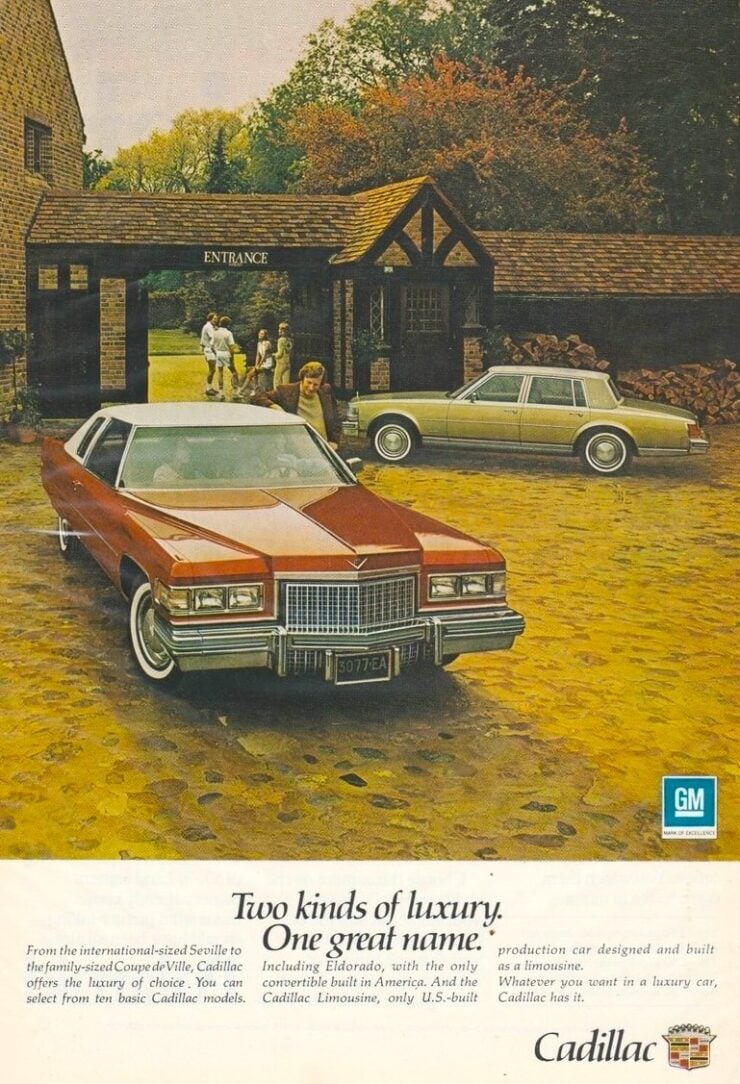

The name was borrowed from French carriage terminology, it meant “of the town” and was chosen to succinctly convey refinement and exclusivity. Though truth be told, most Americans then (and now) had no idea what it meant – it just sounded nice.
The original prototype showed off Cadillac’s ambitions, with elegant styling touches, a one-piece glass windscreen, and luxury appointments that pushed the brand to the very top of General Motors’ hierarchy.
By 1956 the DeVille badge was available on both two and four-door hardtops, and in 1959 it was elevated to full model status for the first time. The Series 62 connection was severed, and the DeVille name came to represent Cadillac’s mainstream luxury offering, second only to the Fleetwood in prestige (and price). This set the stage for a long production run that spanned eight generations through to 2005.
Through the 1960s the Coupe DeVille evolved stylistically alongside Cadillac’s wider design philosophy – the tailfins of the late 1950s gradually softened, replaced by broad shoulders, stacked headlights, and clean beltlines that defined the brand throughout the decade.
By the early 1970s, the Coupe DeVille had grown significantly in size and presence, both due to consumer demand for comfort and GM’s desire to maintain the Cadillac’s visual dominance on the road.
The fourth generation, introduced in 1971, represented the apex of Cadillac’s big-car era. The Coupe DeVille stretched over 19 feet long and carried a wheelbase of 130 inches.
Its sheer size gave it a commanding presence anywhere it went, while inside it could comfortably seat six adults. Safety and comfort features were plentiful, with power accessories and advanced climate control becoming increasingly common.
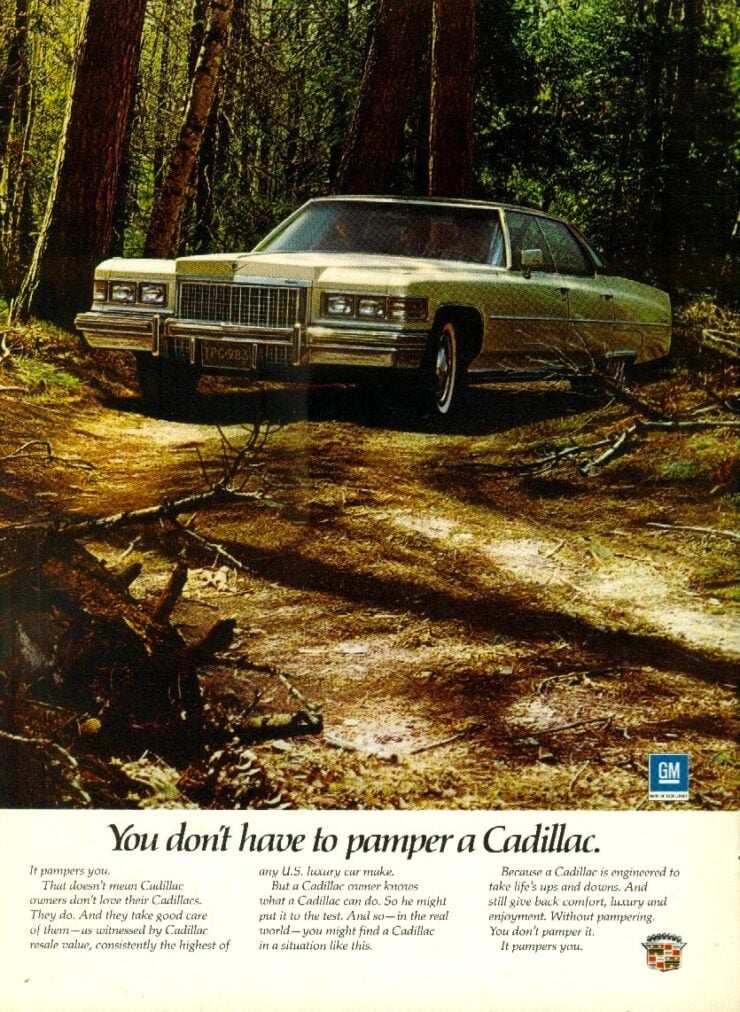

By 1974 the car received full B-pillars and small opera windows, shifting away from the open-pillar hardtop look that had defined earlier models. In 1975 the headlights were updated to rectangular units with wraparound corner lamps, while the grille was reshaped to sit flush with the front fascia, creating a squarer, more formal face.
The 1976 Coupe DeVille marked the end of Cadillac’s traditional full-size personal luxury coupe. This was the final year before GM’s major downsizing program, and it remains one of the largest coupes ever sold by an American manufacturer. At over 5,000 lbs, the car embodied the era’s belief that size was synonymous with prestige.
Under the hood, the 8.2 liter (500 cubic inch) V8 became the standard and only engine offered, making it the largest displacement passenger-car engine of the period. Cadillac had previously used the 7.7 liter (472 cubic inch) V8 as standard, but for 1976 the lineup was simplified around the 500, which produced prodigious torque even as emissions regulations and catalytic converters began to sap horsepower figures.
Styling for the final year included a cross-hatch grille, Cadillac script badging, and vinyl roof treatments that highlighted the formal coupe roofline. Interiors were richly upholstered in cloth or leather, with a wide choice of trims and options.
Buyers could specify everything from CB radios to advanced automatic climate control, playing into the DeVille’s reputation for technological luxury. Production reached 114,482 units in 1976, a remarkable figure that helped Cadillac achieve record sales of over 309,000 cars across its lineup.
The 1976 Coupe DeVille is often remembered as a high-water mark for Cadillac. It was the last of the truly massive coupes, combining space, comfort, and power in a way that subsequent downsized models could not replicate.
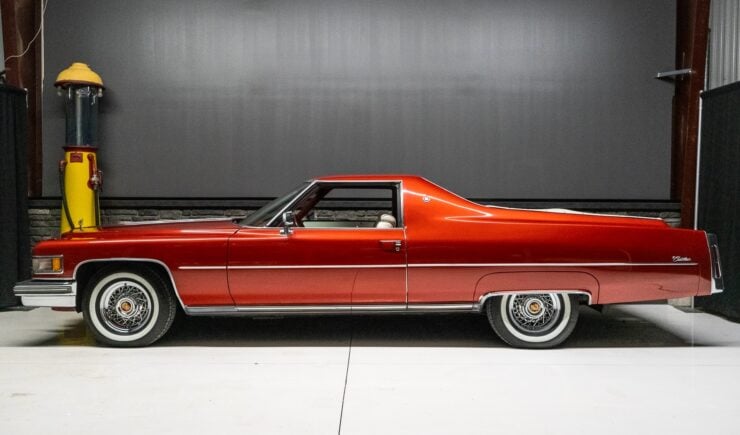

Although no one knew it at the time, many years later the sheer scale of the 1976 Coupe DeVille would make it the perfect donor car for a conversion into an El Camino-style pickup – even if it made the Cadillac faithful weep.
The 1976 Cadillac Coupe DeVille Pickup Conversion Shown Here
The car you see here started life as a standard 1976 Cadillac Coupe DeVille, and this is how it remained for a time, before it was bought by Dick Baker of Custom Coach Inc. in Lima, Ohio who had an idea. On the face of it it may have seemed like madness, but the idea was to turn the Cadillac into the “Cadamino” – the world’s first Cadillac/El Camino love child.
The rear end of the Coupe DeVille was cut away and significantly modified, and the metal pickup bed and many other parts from a Chevrolet El Camino were fitted. The quality of the work was excellent, and the attention to detail is so good you could just about believe it’s a production model if you didn’t know better.
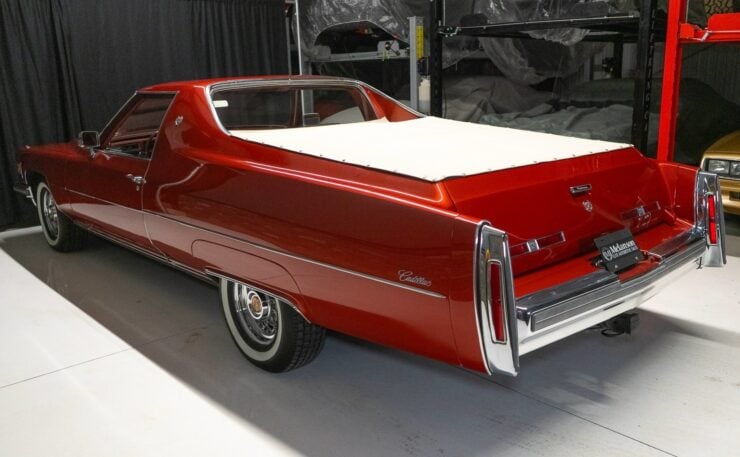

Years later in 2012 the car would receive a repaint in the Copper Metallic it wears now, additional work included retrimming the bench seat in white leather, and installing 15″ wire-wheels. After it was sold in 2024 a series of mechanical maintenance jobs were completed, and the car now shows 26,000 miles on the odometer.
It’s now being offered for sale out of Stratford, Ontario, Canada with service records, historical documents, spare hubcaps, owner’s and shop manuals, and Ontario registration. If you’d like to read more about it or register to bid you can visit the listing here.
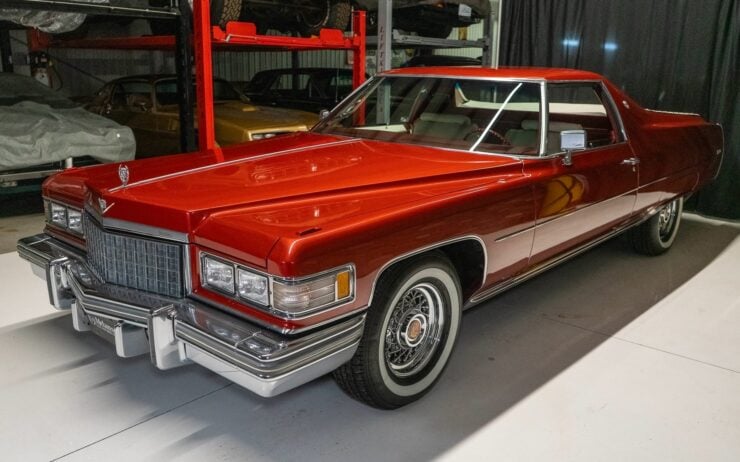
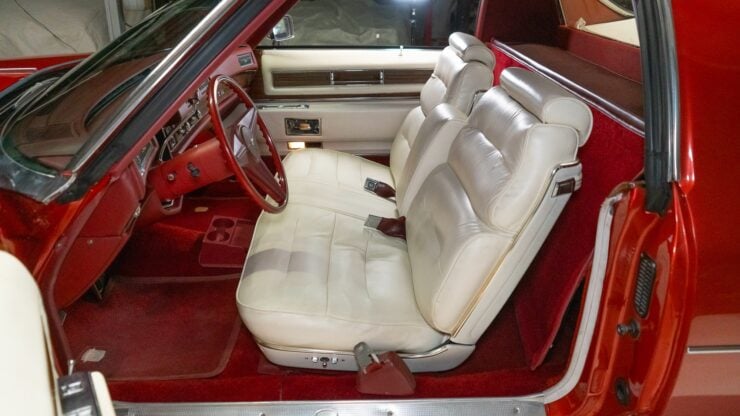
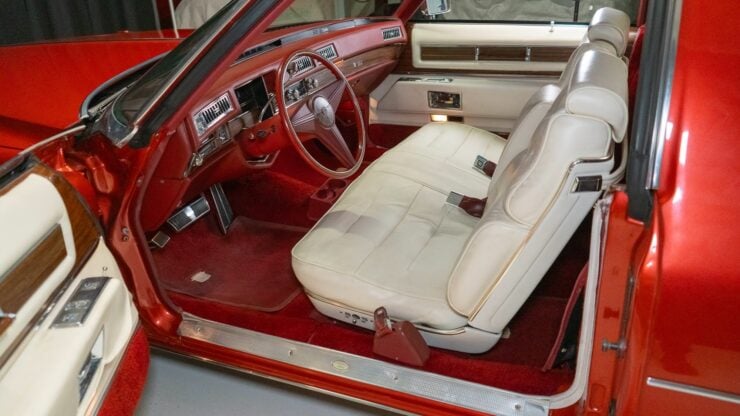
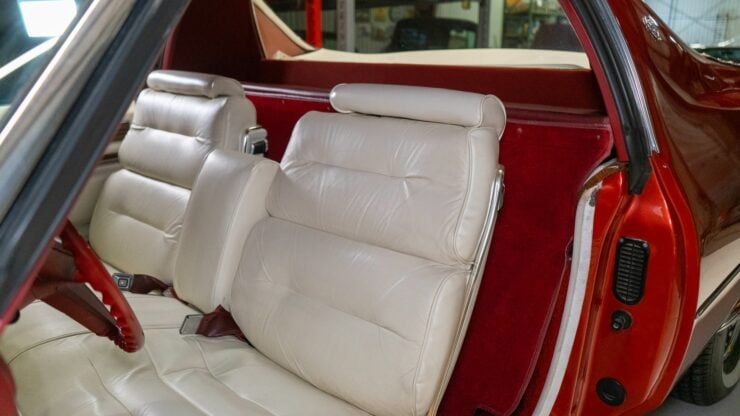
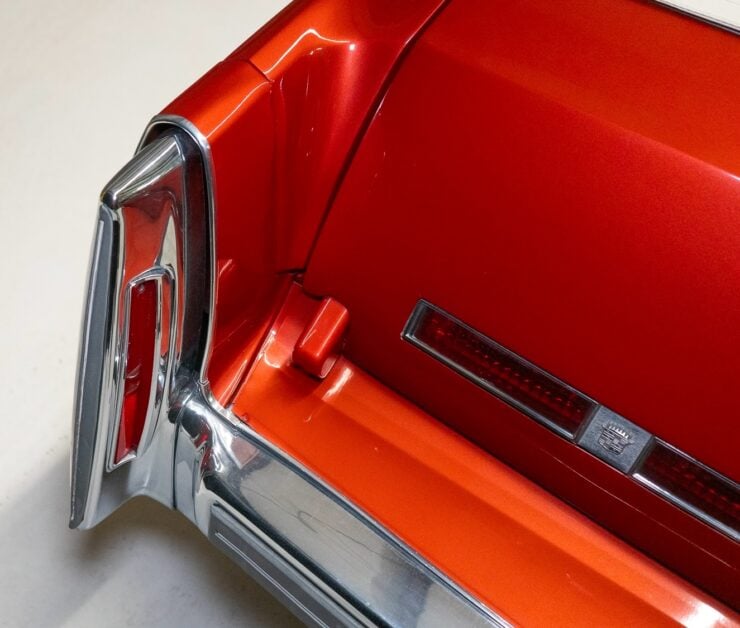
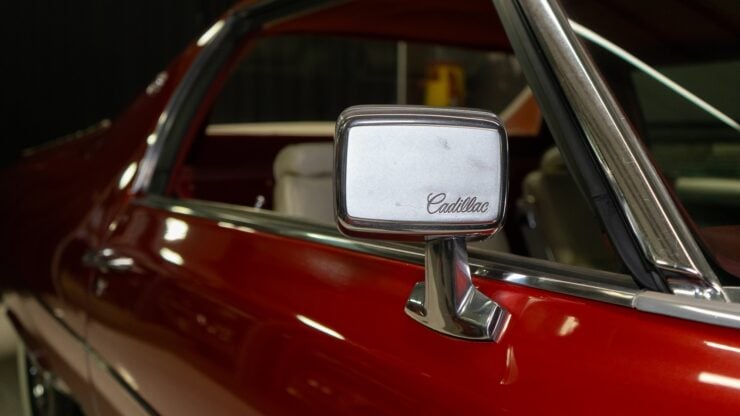
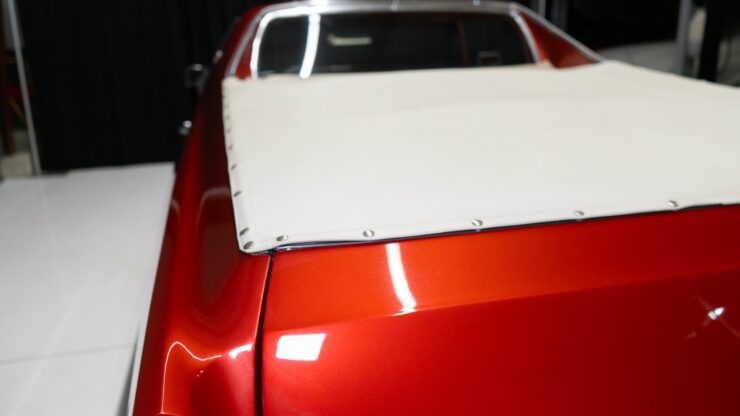
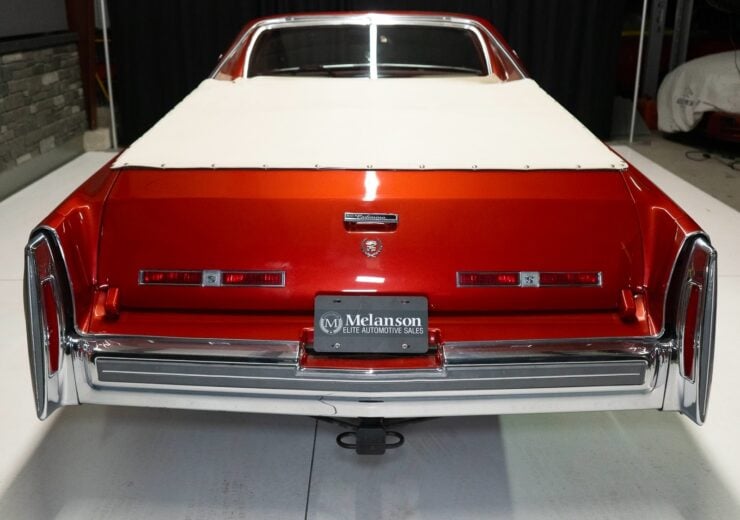
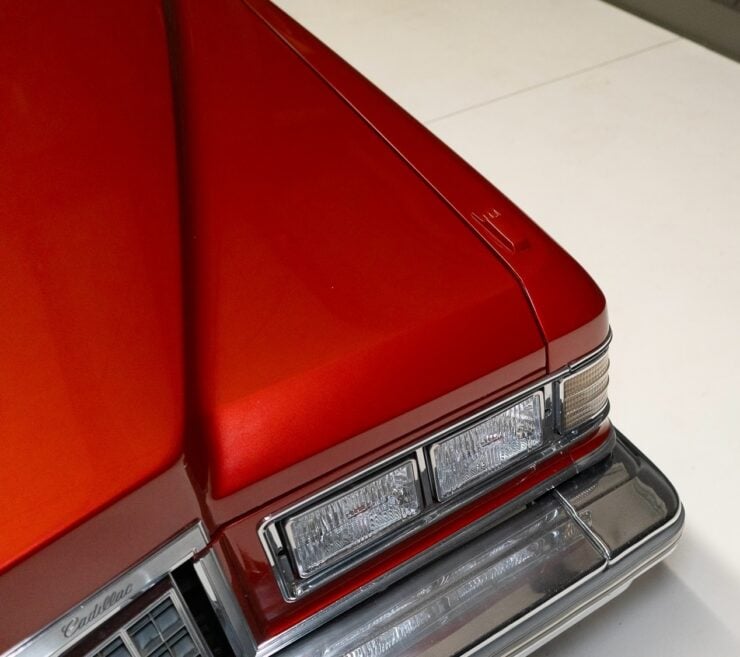
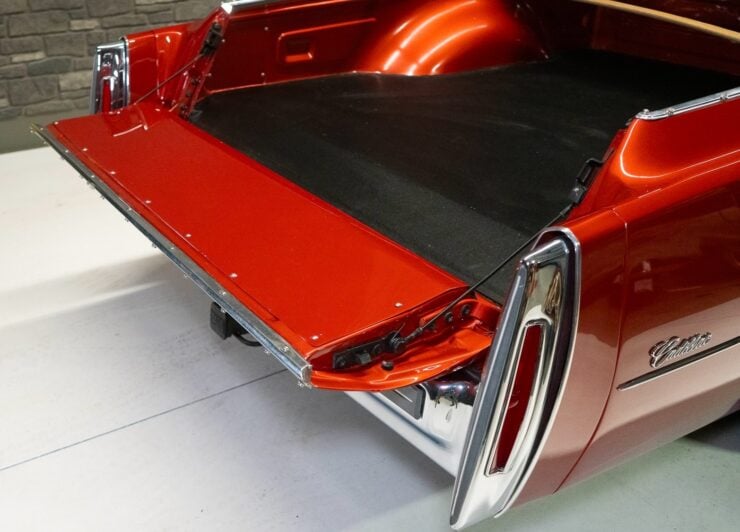
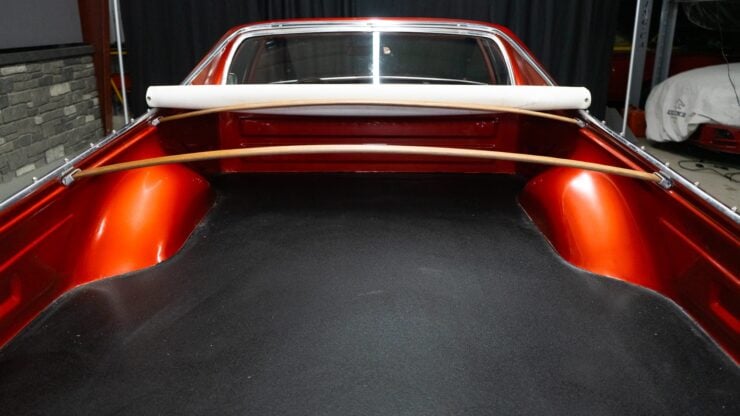
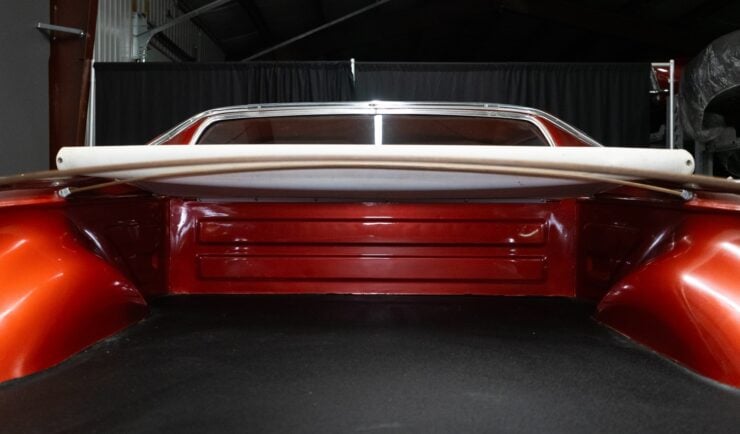
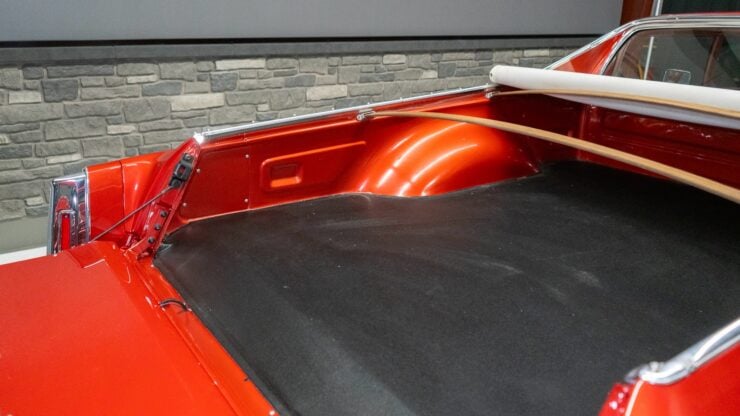
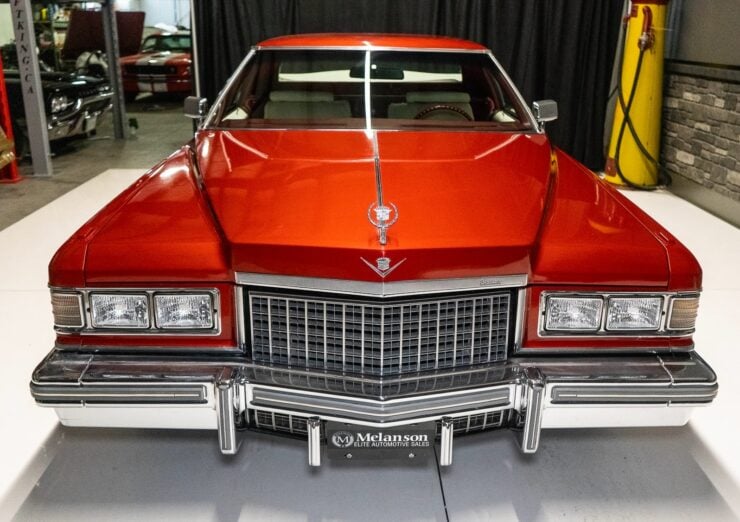
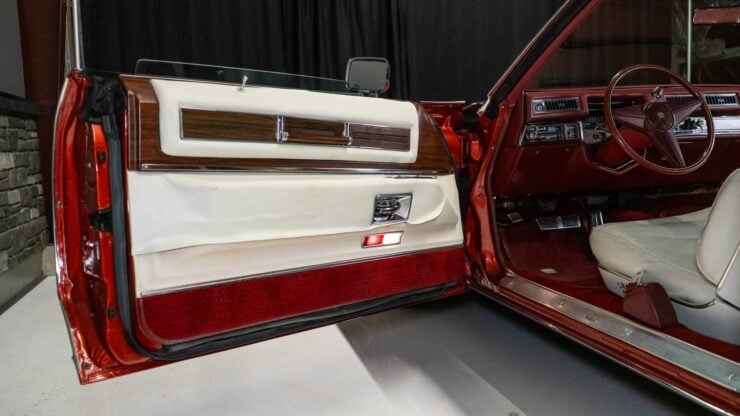
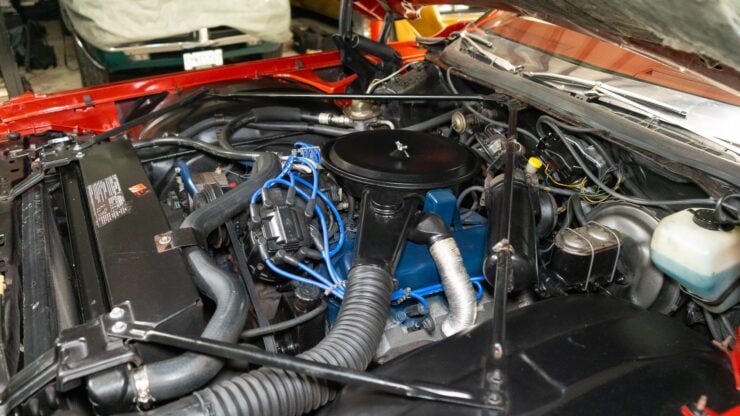
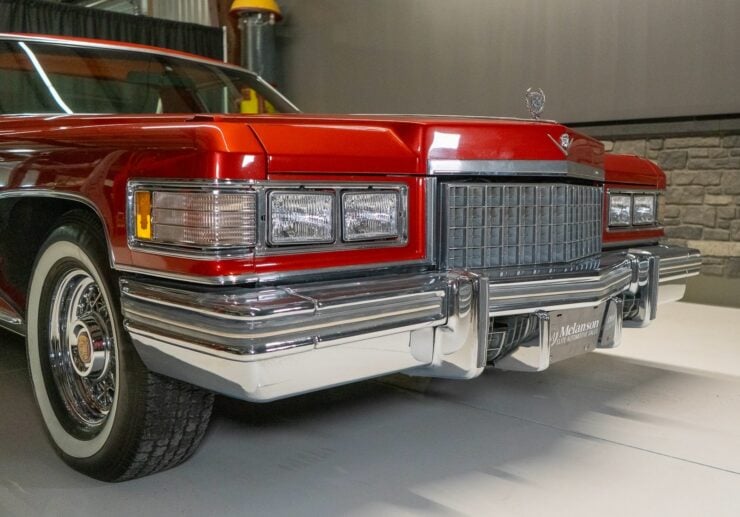
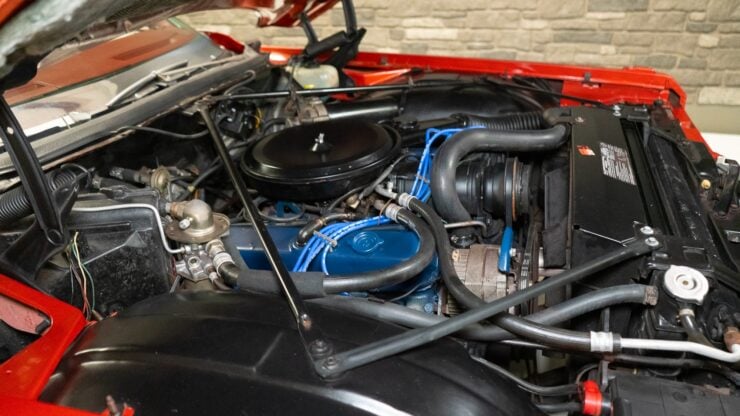
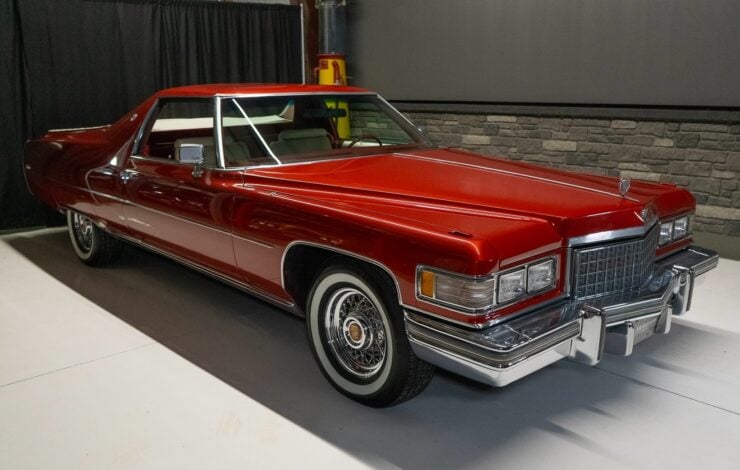
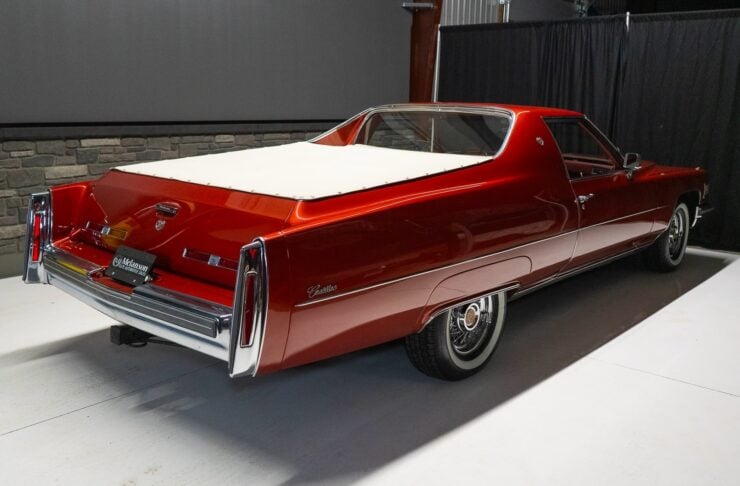
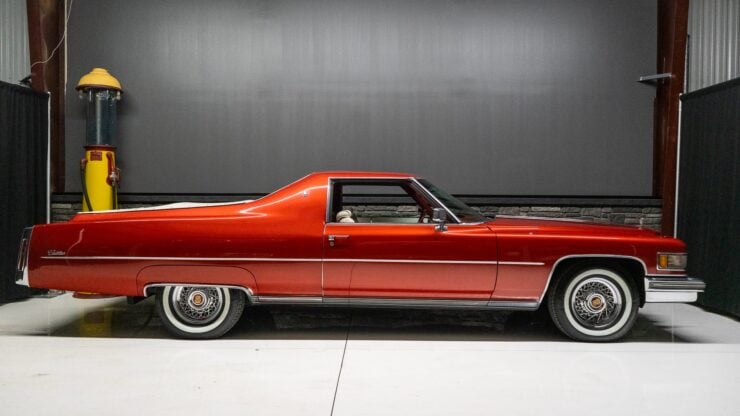
Images courtesy of Bring a Trailer

